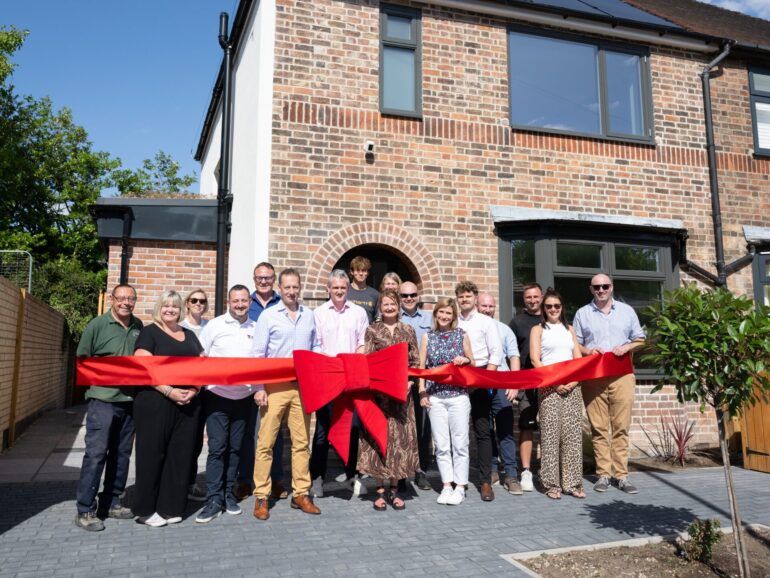Cambridge Building Society has turned a three-bedroom 1930s house on Ferndale Rise, Cambridge, into a carbon-positive home as part of a retrofit project.
The property’s Energy Performance Certificate (EPC) rating was improved from D to A, with work aiming for Passive House standards.
Upgrades were tailored to the age and structure of the house.
The project included insulation to internal, external, cavity, roof, and floor areas, airtightness measures with liquid membrane applied to walls, floors and ceilings, an air source heat pump replacing the gas boiler, wet underfloor heating on both floors, a mechanical ventilation system with heat recovery, and solar photovoltaic (PV) panels, 10 on the house and two on a structural insulated panel (SIP) building in the garden.
The house now removes more carbon dioxide than it emits.
Other improvements included triple-glazed windows and doors, a 3,000L underground rainwater harvesting tank for toilets, washing machine and garden, and a sedum roof on the side extension.
Carole Charter, chief commercial officer at Cambridge Building Society, said: “For 175 years, we’ve helped people have a home, while responding to the wider housing challenges of each generation.
“As part of our commitment to supporting homeowners with an understanding of what sustainable solutions could be made to their home, we’ve worked closely with skilled tradespeople to test different construction methods and energy improvements as part of our ambitious retrofit project.
“The carbon-positive status of the building shows what is possible when ambition meets action.”
Charter added: “By transforming a standard 1930s semi into a showcase of deep retrofit innovation, we hope homeowners will feel inspired to make improvements that work within their own budget and circumstances.
“Our aim is to provide people with a variety of options to consider, as we recognise there’s no one-size-fits-all approach to retrofitting.”



